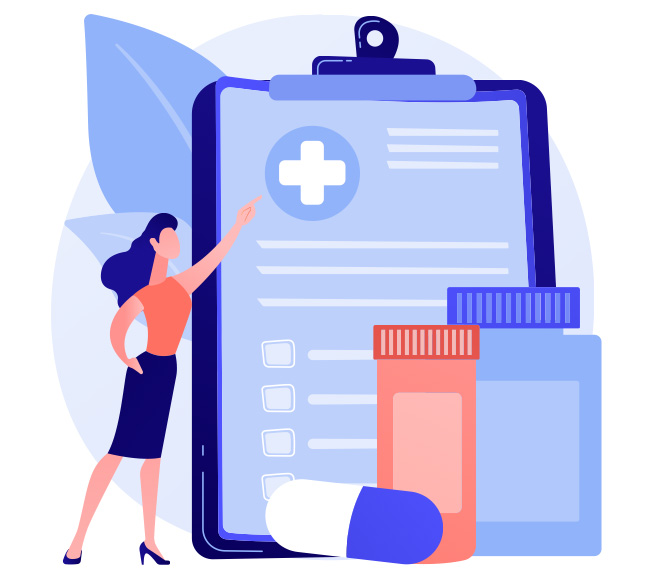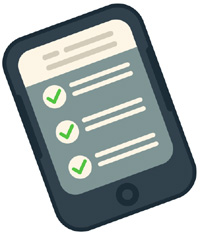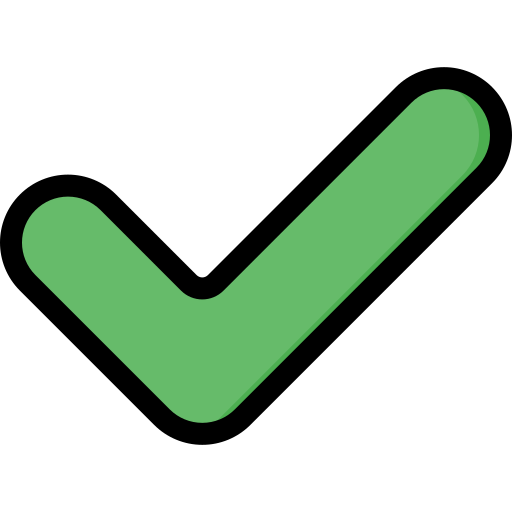
Health issues such as a sprained ankle, nighttime fever, or minor cut are often unplanned. Having a well-stocked medicine cabinet allows you to respond quickly in these situations without having to wait for outside help. This saves time and provides peace of mind, which is especially important for families with children, older adults, and those with special medical needs.
A checklist makes it easy for you to think of everything important – step by step, without forgetting anything. In this article, you will find a clear and practical overview to help you organize together your medicine cabinet quickly and effectively. Let’s get started – for more safety and peace of mind in everyday life!

Recommendation for using the checklist
- To get an overview of the contents of a medicine cabinet, I recommend that you go through the checklist in its entirety. You can skip items that are not relevant to you. Check to see if you have everything you need for your medicine cabinet or if you need to buy anything else. Also check that the products you already have are not past their expiration date.
- The checklist is numbered sequentially. If you are pressed for time and cannot complete the checklist all at once, write down the last number and continue later.
Checklist:
Medicine cabinet
Sections of the checklist
Medications for cold symptoms 
Pain and fever relief 
Digestive and gastrointestinal medicines 
For wounds and (sports) injuries 
For allergies, intolerances and skin irritations 
Bandaging supplies 
For babies and young children 
Additional products 

| Section: Medications for cold symptoms |
1. Nasal spray or drops  – Helps moisten the nasal mucous membranes during colds and makes breathing easier. Use for a limited time to avoid habituation. |
2. Expectorant  – Helps loosen stubborn mucus in coughs or bronchitis, clearing the airways and making breathing easier. |
3. Cough suppressant  – Helps relieve dry, irritating coughs, especially at night, by reducing the urge to cough. |
4. Throat lozenges  – Sucking on lozenges relieves sore throat and may reduce inflammation in the throat. |
5. Cold rub for application  – Apply to the chest or back to release essential oils, increase circulation, and ease breathing. |

| Section: Pain and fever relief |
6. Fever reducer  – Reduces high fever and relieves associated symptoms such as headache and body aches. |
7. Pain reliever  – Relieves mild to moderate pain, including headache, toothache, or menstrual cramps. |
8. Anti-inflammatory  – Reduces inflammation and relieves pain, often used for joint and muscle discomfort. |

| Section: Digestive and gastrointestinal medicines |
9. Anti-diarrheal medications  – Slows bowel movement and helps the body retain more fluid to reduce water loss. |
10. Electrolyte solution for rehydration  – Helps restore the body’s electrolyte balance after excessive sweating, diarrhea, or vomiting. |
11. Laxative  – Promotes bowel movement to relieve constipation. |
12. Medication for cramps, gas, or bloating  – Relieve discomfort caused by gas, bloating, or cramping. |
13. Medication for nausea and vomiting  – Calm the stomach to reduce nausea and vomiting while decreasing fluid loss. |

| Section: For wounds and (sports) injuries |
14. Pain relief gel for muscles and joints  – Topically applied to relieve pain and inflammation in muscles and joints. |
15. Cooling compress or gel  – Reduces swelling and relieves pain from bruises, sprains or insect bites by cooling. |
16. Wound disinfectant  – Cleanses wounds to help prevent infection and promote healing. |
17. Skin disinfectant  – Used to cleanse and disinfect the skin before injections or minor procedures to minimize the risk of infection. |
18. Wound and healing ointment  – Promotes healing of minor cuts, scrapes and skin irritations. |

| Section: For allergies, intolerances and skin irritations |
19. Allergy/seasonal rhinitis medication (antihistamine)  – Reduces allergy symptoms such as sneezing, itching, or watery eyes by blocking the effects of histamine. |
20. Fructose intolerance medicine  – Relieves symptoms such as gas and diarrhea after ingesting fructose. |
21. Medicine for lactose intolerance  – Helps digest lactose to avoid discomfort such as bloating or diarrhea. |
22. Gluten intolerance (celiac disease) medication  – Relieves symptoms of accidental gluten ingestion in people with celiac disease. |
23. Medication for histamine intolerance  – Reduces symptoms such as headaches, skin rashes, or gastrointestinal problems caused by histamine intolerance. |
24. Sunscreen with high sun protection filter (SPF)  – Protects skin from UV rays and helps prevent sunburn. |
25. Sunburn relief gel or ointment  – Soothes and cools the skin to relieve pain and promote healing. |

| Section: Bandaging supplies |
26. Adhesive bandages  – Protect small cuts or wounds to prevent infection and promote healing. |
27. Elastic bandages  – Used to secure bandages or support joints after sprains and strains. |
28. Sterile gauze pads  – Cover wounds to prevent infection and promote healing. |
29. Triangular bandage  – Multi-purpose; e.g., used as an arm sling or to secure dressings. |
30. Sterile disposable gloves  – Provides protection against infection during wound care or first aid. |
31. Bandage scissors  – Used to cut bandages, tape or gauze. |

| Section: For babies and young children |
32. Anti-gas medication  – Relieves gas and associated abdominal discomfort by breaking up air trapped in the intestines. |
33. Analgesic/antipyretic suppository or fever syrup  – Relieves pain and fever, especially for children who have difficulty swallowing pills. |
34. Teething gel  – Helps relieve teething pain and soreness. |
35. Zinc oxide cream for irritated skin  – Helps heal irritated skin, such as diaper rash, by protecting and regenerating the skin. |
36. Soothing teas (such as anise, caraway, or fennel)  – Aids digestion and relieves gastrointestinal upset and bloating. |
37. Seawater or saline nasal spray  – Cleanses and moistens the nasal passages to help relieve colds and nasal congestion. |

| Section: Additional products |
38. Fever thermometer  – Accurately measures body temperature when fever is suspected. |
39. (Splinter) Tweezers  – Removes splinters or thorns. |
40. Insect bite relief  – Reduces itching, swelling and pain caused by insect bites. |
41. (Antihistamine) gel or ointment to soothe insect bites  – Soothes allergic reactions and itching, and promotes healing. |
42. Tick repellent  – Protects against tick bites and associated risks of infection, such as Lyme disease. |
43. Tick removal tool  – Safely and completely removes ticks to prevent infection. |
44. Hot water bottle or cherry stone pillow  – Provides warmth and relief for abdominal pain, muscle tension, or general comfort. |

Now you have everything you need for your medicine cabinet. Check it once a year to make sure it’s still complete. Do the products have at least 12 months of shelf life remaining? Store your medicine cabinet in a cool, dry, dark place and keep it out of reach of children. The kitchen and bathroom are not ideal locations because there is too much moisture there. If it’s been a while since your first aid course and you need a refresher, check out the 7 steps of first aid. If you found this checklist helpful, please come back to ChecklistFan.com – here you will find more practical checklists to make your everyday life easier.
Your ChecklistFan 

More checklists
All checklists on ChecklistFan.com
Note on the checklist: All information is provided to the best of my knowledge. However, I assume no liability and make no claim to completeness or accuracy. This checklist was translated from my German website ChecklistFan.de. Please note that it describes conditions and requirements specific to Germany, that may differ from those in your local area or country. You may need to make adjustments to reflect your local conditions or regulations. Some of the resources I used to create the checklist include: Federal Office for Civil Protection, Cleveland Clinic, Hansaplast. If you have any suggestions for improving the checklist, you can leave a comment or write to me: reiko@checklistfan.com.

